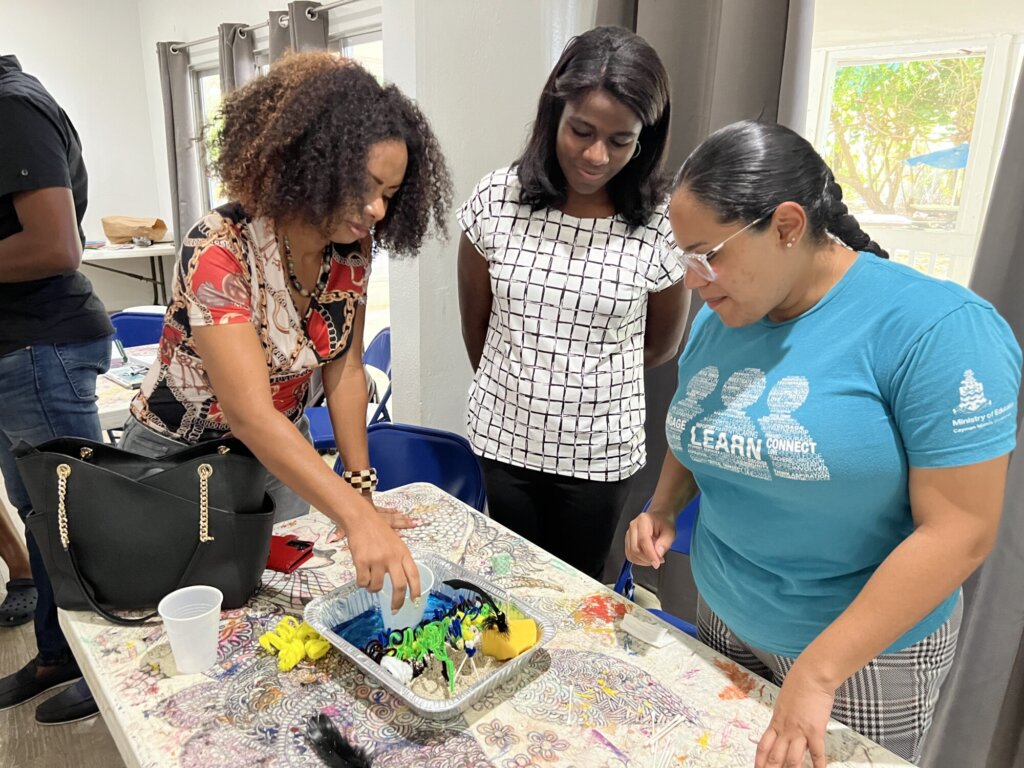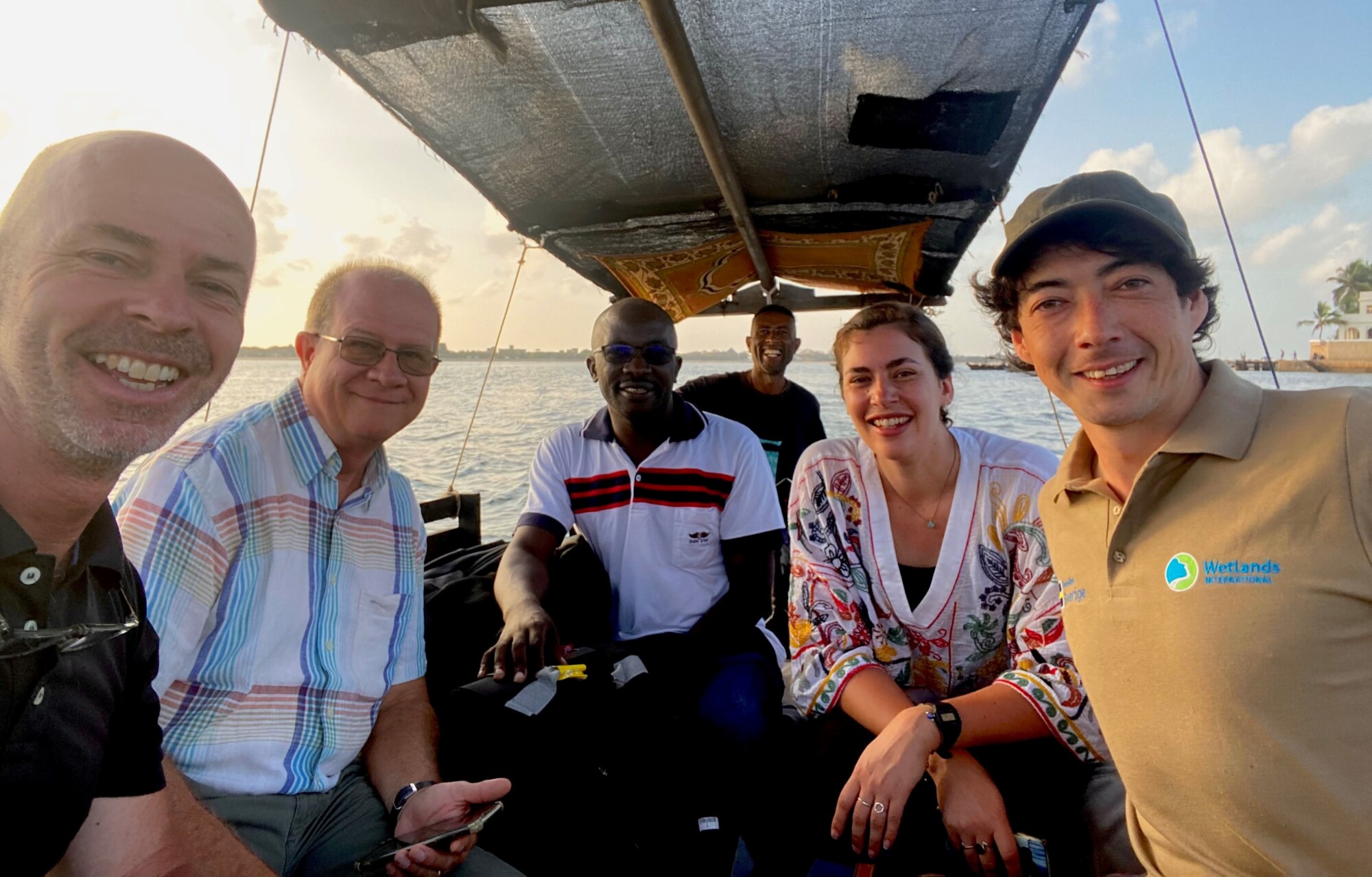
MAP turns 30
Meet Some of the Map Team as we Celebrate our 30th Anniversary

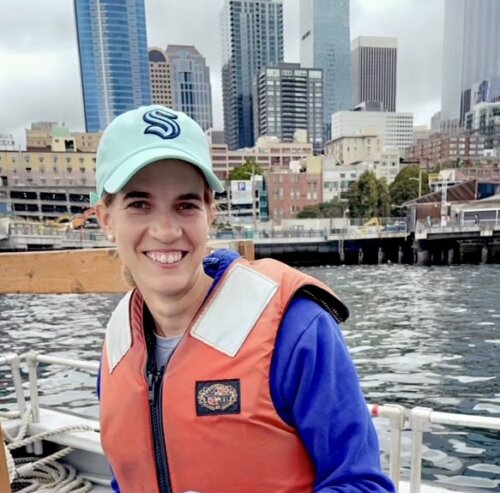
HESPER KOHLER
Development Associate
Tell us a little bit about you and how you got involved in MAP
It may seem weird for there to be a mangrove nonprofit in the Pacific Northwest, but for me, it was the best news to accidentally stumble upon. I grew up in the desert west of the United States and then moved to the lush tropics of the Florida Keys when I was 10. I was captivated living by mangrove forests and continued to love them through my thesis in college 10 years later and far from the keys. I found MAP accidentally online when I was looking for volunteer opportunities in Seattle, Washington, my current home. A mangrove nonprofit in the Pacific Northwest? Perfect! I volunteered with MAP, then in October of 2021, I was welcomed on as the new Development Associate for MAP. I am thrilled to be involved in mangrove conservation and restoration around the world!
Why do you love mangroves and why should we protect them
I am a little nerdy when it comes to mangroves, but maybe we all are at MAP. There is nothing else like mangroves in the world. They are the apodeme of resilient and adaptable. Big waves? Mangroves hold fast and keep coasts from washing away. High tides? The plants survive with specialized breathing pores called lenticles in their bark that can open or close, so the plant doesn’t drown. Too much salt? There are multiple ways mangroves have evolved to get rid of salt. The list goes on and on including endless benefits for ocean ecosystems and coastal communities. No other plant can live in their perfect balance of land, sea, and air. They are ‘magnificent’ and that is the reason we need to protect them. Even though mangroves are resilient, that resilience can only go so far when it comes to climate change and deforestation. We are losing mangroves at a fast rate and we need to do all we can to protect them, and therein protect all the life that depends on mangrove forests too.
Your highlight from working with MAP
I have not been with MAP for long, but I love being part of an international team. It is sometimes weird to only know your coworkers by email or staff zoom meetings, but it is very unifying to all be working towards the same goal even though we are all in different time zones. As the world is opening up more, I can’t wait to get out and see more of what MAP does out in the field.

SAM NUGENT
Newsletter Director
Tell us a little bit about you and how you got involved in MAP
In 1992, I met Alfredo in a copy shop in Port Angeles (yes, copy shop, not coffee shop, as it was still pre-Starbucks era). He was making copies of a new logo and comic book he had just received for a new non-profit he was starting. I was there to run copies of a flyer for a new graphics business I was launching. I offered to redo the simple stick-figure comic book he had with a more traditional comic book format. Our Mangroves At the Root of the Sea comic was a hit – ending up translated into 5 languages including Swahili. A few years later Alfredo offered me a position as grant-writer and Finance Director, which I held for almost three years before taking a real job (haha). Alfredo and I remained friends and I often did graphic or other work in support of MAP. When Austin stepped down as editor of MAP News, Alfreda again turned to me and I gladly stepped into the role which I have held for the past 15 years
Why do you love mangroves and why should we protect them
During my “previous life” in the garment industry (1985-1991), I had the opportunity to travel throughout Southeast Asia, and had seen the beauty of the mangroves and ugliness of their destruction. I also met the people whose lives depended on tropical forests. When Alfredo and I met, we already had much in common regarding the desire to help protect these important ecosystems. As Alfredo explained to me, when he told a villager in Thailand that “someone should do something about this destruction” the man replied “why not you?” I shared Alfredo’s conviction that the best place to stop mangrove destruction due to shrimp farming was at the mouth, namely here in the U.S. where shrimp consumption was driving the destruction. So being part of a tropical forest non-profit located in a temperate rainforest in the Pacific Northwest of the United State actually made good sense. Why should we protect them? Read a few issues of MAP News and you’ll soon discover.
Your highlight from working with MAP
I have many, many good memories and highlights, but two stick out as “best”.
The first was when, shortly after the comic was published and I had done another for Earth Island Institute’s Sea Turtle restoration project, Alfredo told me that he was unable to attend a conference in San Francisco and asked if I would like to attend in his stead. I told him that “if he was buyin’ I was flyin’” and I did. I took copies of the Sea Turtle and Mangroves comics with me, and distributed them at the conference. Towards the end of the conference, the Keynote speaker, Dr. David Suzuki was standing around talking with folks. I had been a big fan of The Nature of Things since he joined it in 1979, and I considered him a true movie star. Star-struck, I timidly approached and started to introduce myself to him when he stopped me and said “I know you! You’re the guy that drew those comic books that everyone was reading instead of listening to my speech!” I beemed for months afterwards. David Suzuki knew me! On later projects I actually contacted David, and he hadn’t forgotten who I was and was always very helpful to whatever resources I needed. I admire him to this day.
The second highlight was leading a group of college students on a “Get Muddy” tour of Sri Lanka and Thailand in 2003. We were the first westerners to visit Sri Lanka after 2 decades of civil war. When we arrived, the King’s Dancers performed for us at the coast. What we didn’t know until much later, was the King’s Dancers do not perform outside of the King’s Palace in Kandy. But they come to do so for us. Previous dignitaries were invited to the palace to see them, not the other way around. As a young 30 something, I failed my first role as Ambassador, in that when they finished I simply smiled and nodded and said “that was nice” and turned away, as if they were street performers. I wish I would have known the respect they were showing us so I could have returned it. But that tour was an incredible experience, from drinking beers with their national cricket star players, to having dinner with the Minister of Environment. When we tried to help plant trees, our local expert and mentor told the group of 12 of us to hold the plants while he used a stick to open a hole for the saplings into the ground one at a time. Brash Americans, we grew impatient with this slow process and told him if we only had more sticks we could plant hundreds more. We were wasting time. He did not look up from his work, but said “you will soon return to your home in America, and I will stay to care for the saplings. If there are more than I can care for, they will die, so let us plant the number that can be well tended.’ I have been carrying that thought with me to this day. Americans love to see big numbers. He just wanted to see long-term success. Sadly, In Dec 2004 nearly every coastal villager we had met and sang songs with was either killed or displaced by the great tsunami.
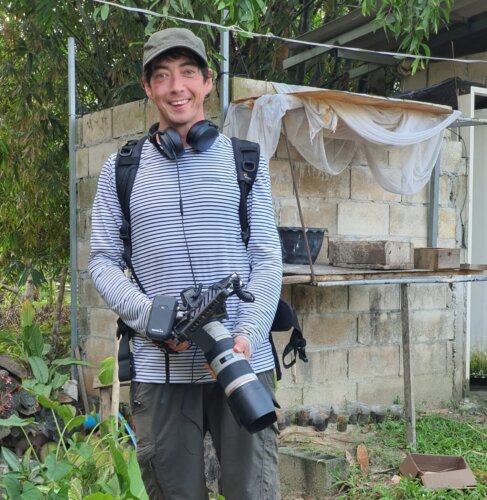
LEO THOM
Creative Director
Tell us a little bit about you and how you got involved in MAP
I had just moved to Thailand to get involved with more environmental / less urban projects and contacted MAP as they had an office down on the Andaman Coast. I remember reading through an older MAP website that was pretty much all text and thinking, wow, this sounds super interesting but I need to see some pictures. Although Jim was running the Asia office, I got an enthusiastic reply from Alfredo, MAP’s Co-Founder, who I managed to convince that we should animate the Question Your Shrimp campaign. After creating my first video on mangroves, I realised I had known very little about them, and this was the start of our journey in 2013. Since then I have been producing mangrove films and running the Mangrove Photography Awards so that we can reach more people and turn their heads towards this undervalued ecosystem which I am now incredibly passionate about.
Why do you love mangroves and why should we protect them
I love them because they are smelly, they are difficult to work in and move through and typically end up as dumping grounds along the shore – they are seen as the underdog. But if you look a little deeper and can see past the wasteland image, you reveal the true beauty, diversity and intriguing nature of these complex and dynamic ecosystems, crossing the boundary from land to sea. Found across the tropics and highly adaptable, the same species of tree can be found being a dwarf tree at 3 metres small, but growing up to 40 metres high in the same region because of certain factors. You have miniature worlds within a mangrove tree; the treetops where birds can nest or rest during a migration, you might see monkeys, snakes, lizards and crabs climbing the bark, while the roots can be submerged or exposed depending on the time of the day. Covering just 0.1% of the earth’s land surface, mangroves can be found in over 118 countries and each place reveals a unique relationship between the communities, the wildlife, and their mangroves. Mangroves serve as vital protective and spawning grounds to tropical fisheries worldwide, help mitigate the effects and causes of climate breakdown by sequestering huge amounts of carbon, and protect coastlines against storms and tsunamis – all vital for sustaining an ever-increasing global population. Despite their abilities to help solve environmental emergencies, they are still rapidly declining around the world; losing out to shrimp farms, tourist resorts, agriculture, and urban land development over the past few decades.
Your highlight from working with MAP
I recently went to the island of Koh Klang in Southern Thailand to capture a story about how coastal people are changing their relationship with stingless bees. Stingless bees are one of the biggest pollinators of mangrove forests and people are adapting their lives so that they can harvest valuable honey and the bees can help enhance the environment. The story had emerged from a long-term MAP project which Jim and Ning had worked on since 2011 with a village called Nai Nang, who have been keeping bees. I have actually worked with and filmed characters from Nai Nang and Klong Prasong since 2015, and this long-term relationship was really key to the trust that everyone had for us and the project. Many of the people we were filming were very poor coastal people, but their lives could change. And it was the16 days of filming with villagers Khun Nit, Bang Bao and Sao, that has to be my work highlight with MAP as it really drove home why I’m doing what I’m doing. The filming was amazing with everyone getting used to the cameras and opening up and the best part about it was that it felt like we genuinely brought positive conservation impact to the people that we came to work with. To capture the change in their lives, with such warm people and see it make a difference, is something I will never forget. Listen to more about the project here.
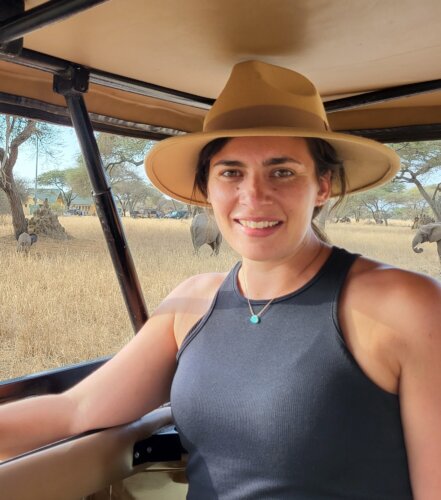
LAURA MICHIE
Program Manager & CBEMR Trainer
Tell us a little bit about you and how you got involved in MAP
I have known about MAP and followed their work for many years. I have worked in mangroves as a researcher for over a decade and have always admired MAP’s work. I did my Ph.D. in the mangroves of Indonesia and have been lucky enough to visit many mangroves around the world. A couple of years ago I reached out to MAP after seeing their advert looking for volunteers. I came on board as a volunteer and then took on a part-time role in communications, and now I work full-time for MAP as their Program Manager & one of the mangrove restoration trainers.
Why do you love mangroves and why should we protect them
I love nothing more than being in a mangrove forest, knee-deep in mud, trekking through water, and watching hundreds of little crabs scurry around. Mangroves are amazing. Mangrove trees thrive in water whose salt would kill other plants. They build land in the face of erosion. They provide food for millions of people. And they are buying our climate time. Protecting and restoring them is vital to the future of our planet.
Your highlight from working with MAP
In March, I went on my first trip with MAP. We went to Lamu, Kenya, to work with Wetlands International and coastal communities. Even though I had been with MAP for almost 2 years at this point, it was the first time I was meeting some of the team face-to-face. A combination of the team being spread all over the world and Covid travel restrictions meant I had not yet had the chance to meet anyone in person. It was excited to finally see how tall my colleagues were! Kenya was a fantastic experience and it really solidified my love for working with such a brilliant organization. We worked closely with coastal communities to teach best practices in mangrove restoration and I got the chance to work with some amazing women who are on the front-line of mangrove conservation and restoration.

SHERRY MANNING
Board Vice President
Tell us a little bit about you and how you got involved in MAP
My work with MAP began five years ago after I attended a reunion in Seattle, Washington, of the Greenpeace core group I worked with in the 1980s. Almost everyone from that time had maintained some level of activism–they’d become environmental lawyers, scientists, educators, politicians. But one fellow in particular, a die-hard activist named Alfredo Quarto, had founded an organization, Mangrove Action Project (MAP), after traveling extensively in SE Asia and seeing the aftermath of shrimp farming sites. Twenty-five years later, he was still at it. With my background with nonprofits and development, he asked me if I would join the board to help them establish a fundraising program.
Why do you love mangroves and why should we protect them
I’d known for some time that mangroves were important; what I didn’t know was they protected shorelines from storm surge and controlled erosion, supported sea grasses and coral reefs, provided habitat for fish, birds, and larger species, and too, that they sequestered up to five times more carbon per acre than any other forest. I began to see key connections between efforts to preserve and restore mangrove forests, and fighting climate change.
Your highlight from working with MAP
The highlights are ongoing, but personally, I am continually inspired by the dedicated MAP team.
From the beginning, I saw a small group of highly committed individuals with an outsized mission. While most of their work seemed to be coming out of the SE Asia office in Thailand, their restoration projects were global, from Australia to Vietnam, on every continent, with places like Belize, Columbia, and Senegal in between. The MAP team was barely paid, they were loyal, longstanding, and passionate. They also had incredible tools at their disposal: they knew (and practiced) the science behind long-term mangrove restoration; they worked within communities to engage and support those most impacted by restoration efforts; they had an educational curriculum for schools, an international art contest for children, exquisite documentary films, a monthly newsletter that kept the mangrove community connected. They were at conferences; they were sitting at the table with decision-makers.
For me, and I guess at this point, 5 years in as a board member, the highlight continues to be experiencing how this amazing group of individuals is changing what we know about mangroves and how we can preserve and restore them.
Related posts
- Read more about MAP in the BahamasBlog
MAP in the Bahamas
The MAP team have recently been to the Bahamas to teach two mangrove restoration workshops. The first workshop was on…
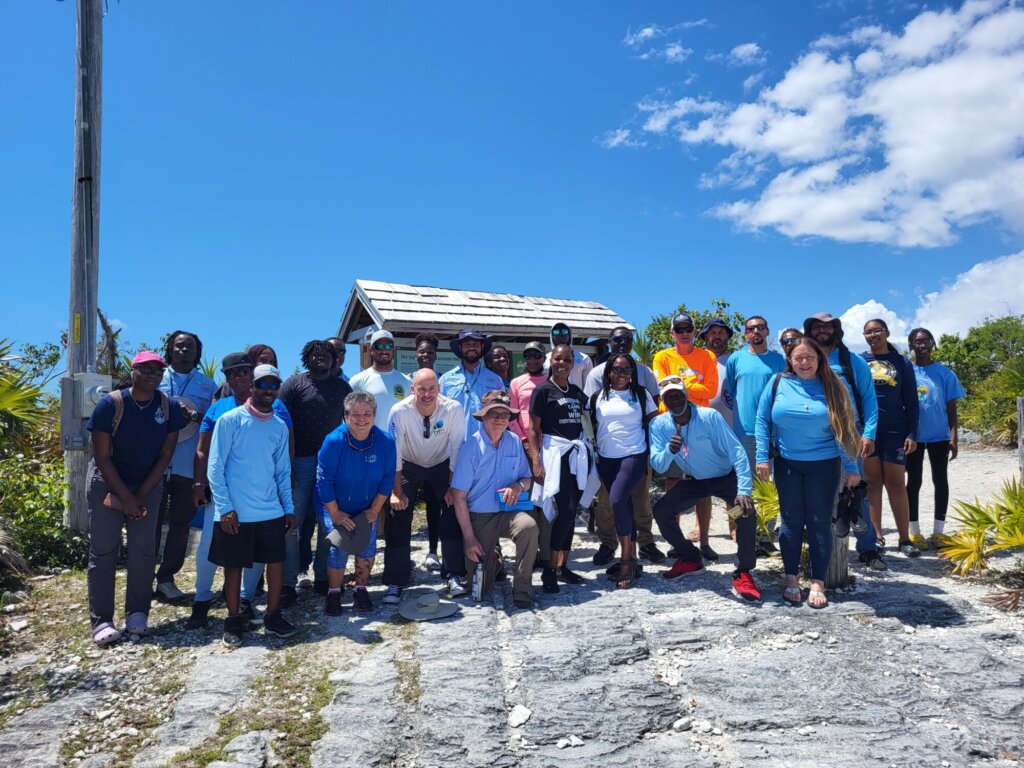
- Read more about MAP in El SalvadorBlog
MAP in El Salvador
Earlier this year, the MAP team visited the Bay of Jiquilisco to follow-up on some mangrove restoration training they provided…
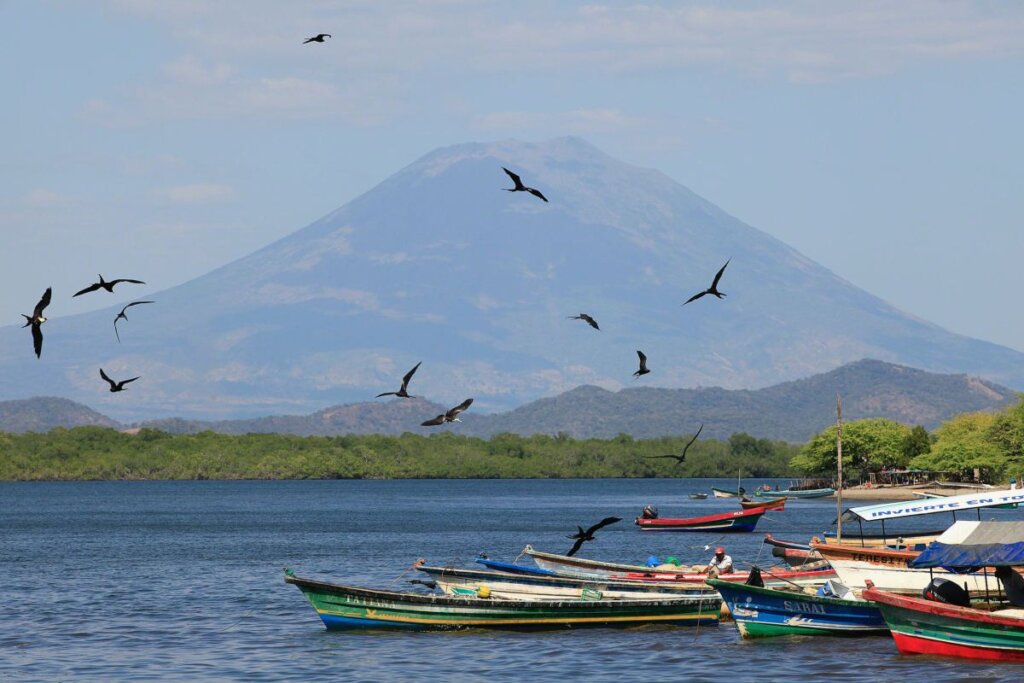
- Read more about Coastal Lagoon Education GuideBlog
Coastal Lagoon Education Guide
The Mangrove Education Project (MEP) launched its new curriculum of the Cayman Islands Coastal Education Guide (CEG) at a Cayman…
